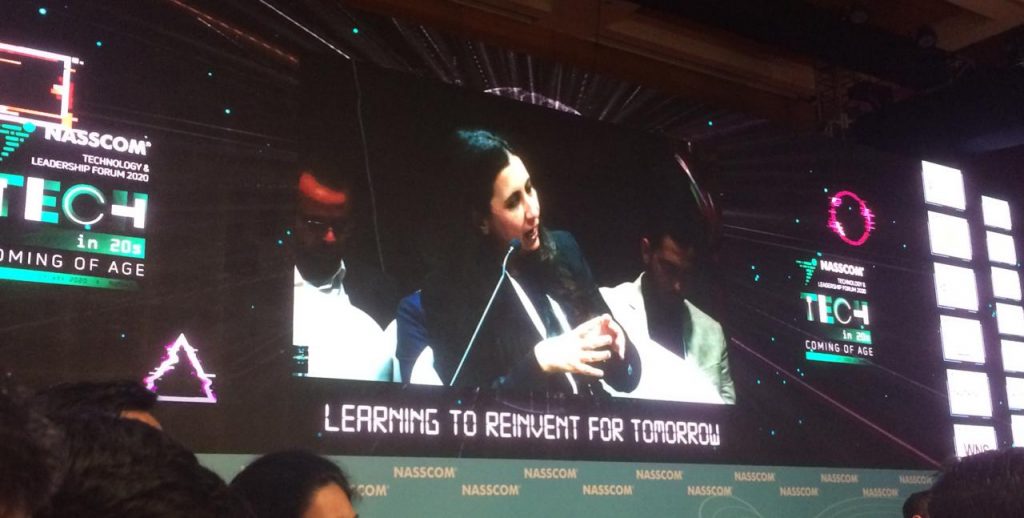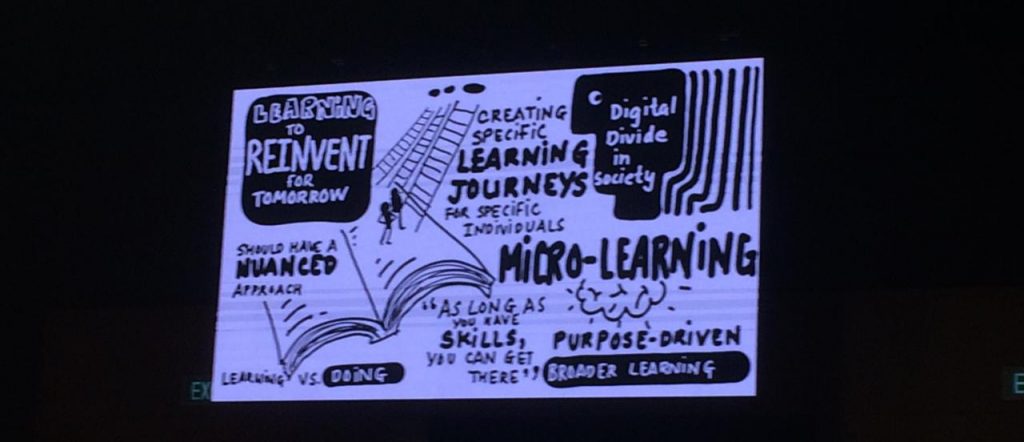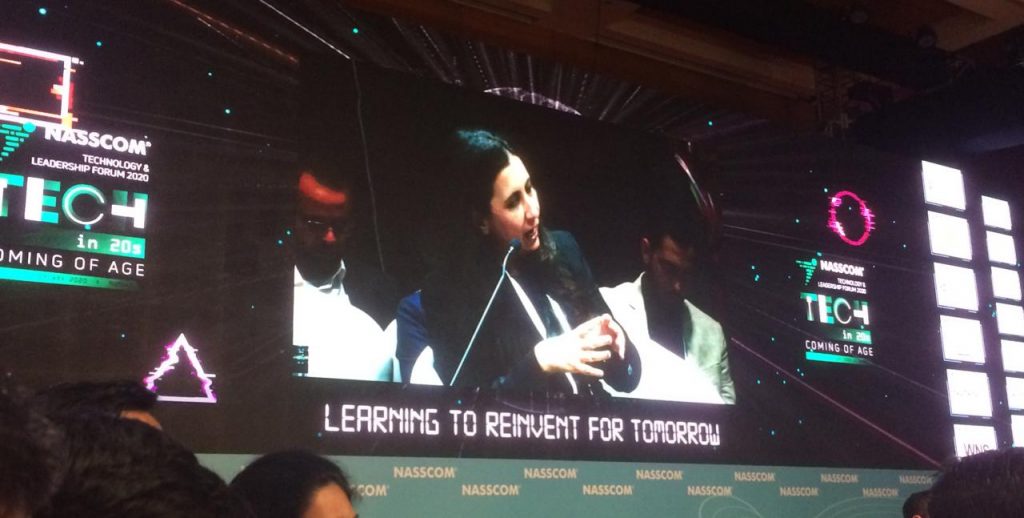Democratized Learning- Charting Personalized Learning Solutions in Organizations
Blog: NASSCOM Official Blog
Learning is the only constant for growth. Organizations having a penchant for learning have seamlessly transformed to being nurturing grounds for honing, maintaining and retaining talent. Empowered by technology, most successful organizations use a proactive and dynamic approach to employee development often customizing the learning needs of their employees.
In an engaging conversation moderated by Nitin Sethi(Founder, Incedo); Pallavi Tyagi(CHRO India, Capgemini) Romi Malhotra(MD, Dell India) and Peter Kokkinos(MD APAC, Udemy) shared their views on charting learning solutions for employees and managing learning and development in organizations at NTLF 2020.

Pallavi Tyagi, CHRO, Capgemini India
(Image Courtesy: Yashika Begwani)
Millennials Approach Learning Differently
According to the World Economic Forum, an estimated 133 billion new jobs will be created by 2025 pushing key stakeholders to substantially reform training systems. With millennials and the generations thereafter being highly specific about planning their career paths, ‘a one size fits all’ approach cannot work in organizations today.
There is a sense of urgency within employees and employers alike to train, act and get results immediately. Learning therefore will have to be more personalized. Romi believes that, “while mapping employee career journeys, employers looked at a 10-20 year period in the past which is now reduced to almost 18 months. Employees want to learn and move up the ladder quickly. Creating specific and tailor-made learning journeys for individuals is integral for organizations.”
The dynamic nature of job responsibilities and constant changes in the organizational atmosphere work as accelerators for employees to pace up and brace themselves for a continuous learning atmosphere.
Creating the Atmosphere
Organizations that are unable to create a cohesive learning environment will become redundant or die soon. Pallavi strongly recommends “focusing on core skilling and micro learning labs.” Capgemini started the Millennial Garage for example that empowers employees to contribute to the organization by providing innovative solutions. Pallavi, who has been a key stakeholder in starting this initiative believes that having such an atmosphere works in two ways:
- It’s a dedicated learning space driving innovation
- Live projects and problems (both internal and client related) are open for employees to take up and solve fostering creative thought.
Concepts like these also subtly address organizational hierarchy. Making problem solving more democratic reduces bias towards seniors, or leaders. Like American businessman and author says, “Great ideas can come from anywhere. There are no titles around an idea.”

Romi Malhotra, MD, Dell India
(Image Courtesy: Yashika Begwani)
Romi almost owns the above quote while talking about building a learning program. “Our focus is more on curating than creating,” he says. “With various tech-empowered learning solutions available, the options are aplenty. All that organizations need to do is find their best fit and execute.”
As one of the leading online learning resource providers though Udemy, Peter shares experiences of the first world problems faced by learners of a tech-learning platform. “Creating a real learning atmosphere doesn’t end with providing the material. It is important to build conversation around learned material. Learners feel satisfied only when they know they’re contributing to a discussion with newly learnt material.”
Undoubtedly engagement of the learners becomes an integral part of building the right atmosphere. While it addresses the problem of learning versus doing at one level, it caters to the individual need of being actively involved in the learning process.
Own Thy Learning Path
Most millennials have a desire to contribute to organizations beyond their regular job. Channelizing their desires by actively finding ways to involve them in creative problem solving (like a Millennial Garage scenario) creates engagement and fosters learning cohesive atmospheres.
Peter shares an example from Udemy’s collaboration with an organization that provides an offer letter to a handful of final year(graduate) students, then trains them for the job and eventually uses these students as facilitators to train the next set of students. “This makes for a clear learning cycle that works well for both the employee and the organization.”
Romi, on the other hand draws the focus towards segmentation while executing learning programs in organizations. “It’s important to segregate the kinds of learners. Equally important is the training delivery mode for each segment. For example, self-directed and online learning programs go well with most training programs aimed at young millennials. However, facilitating classroom session trainings may still be the way to go for older employees and it is important to cater to both kinds according to their comfort of receiving the same.”
Like Peter M Senge explains in his book The Fifth Discipline: The Art and Practice of the Learning Organization, “as the world becomes more complex interconnected and businesses become more complex and dynamic, organizations that will truly excel in the future will be those that discover how to tap people’s commitment and capacity to learn at all levels in the organization.”

The Learning Scribblebook @NTLF 2020
(Image Courtesy: Yashika Begwani
Organizational learning continues to hover around HR best practices across organizations. But L & D alone cannot drive learning. It has to be a cultural change and people will have to take the responsibility of their own learning.
How do you chart a learning model for your employees? Tell us in the comments below.
The post Democratized Learning- Charting Personalized Learning Solutions in Organizations appeared first on NASSCOM Community |The Official Community of Indian IT Industry.
Leave a Comment
You must be logged in to post a comment.








